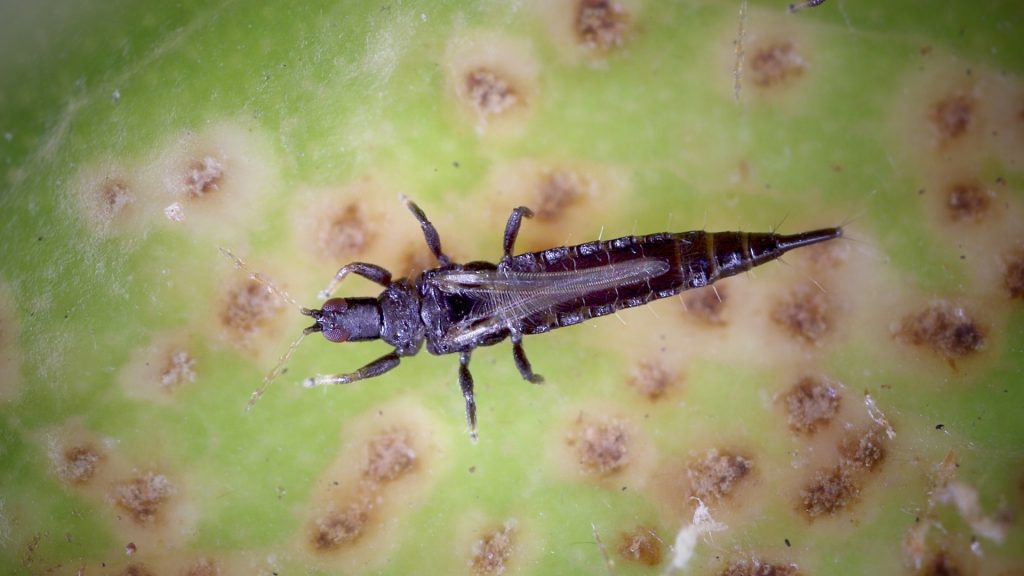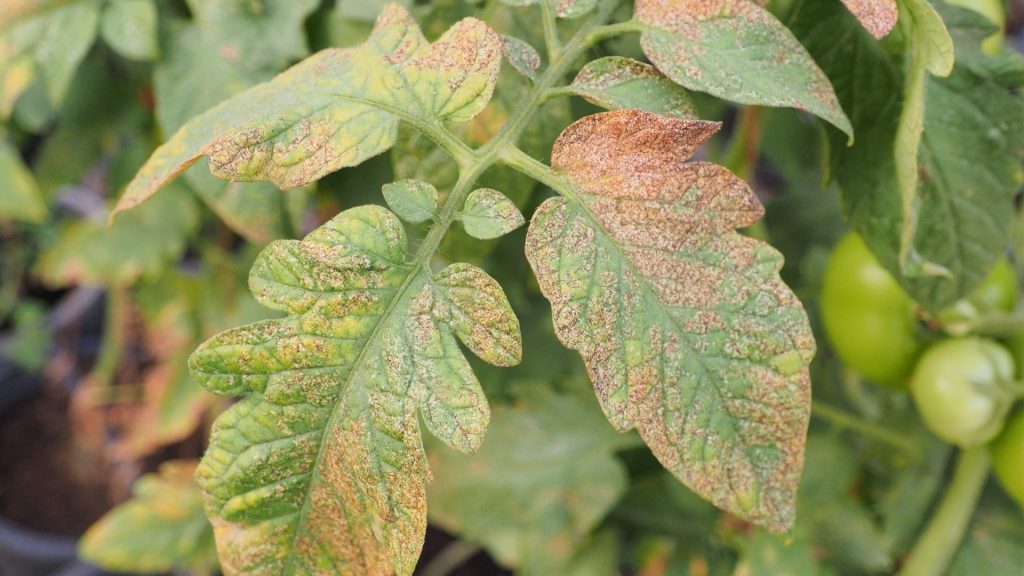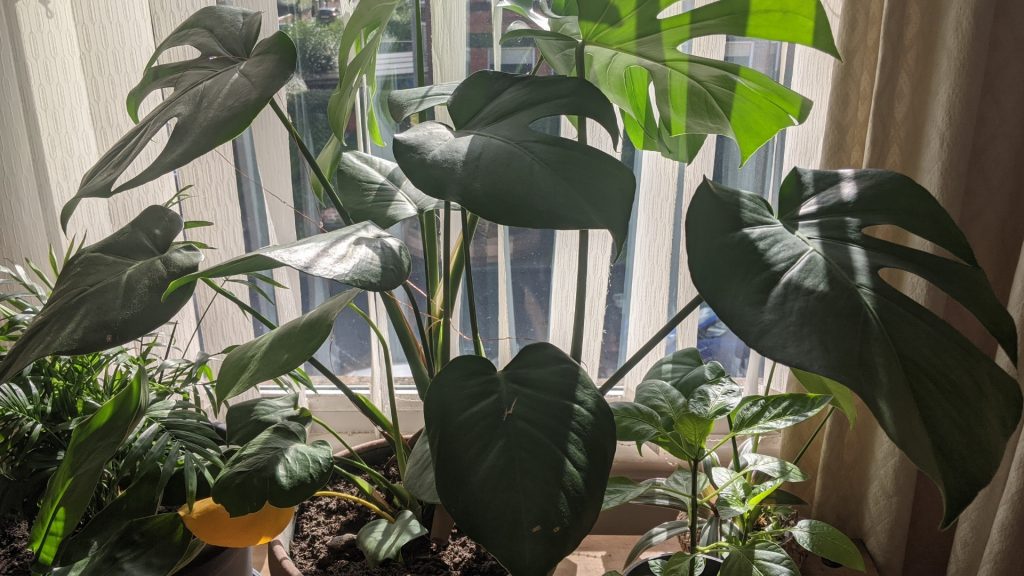Thrips are a common pest that lives nearly anywhere you can find plants. It can be alarming to found out that you have a bug infestation inside your house. Thrips can quickly damage and even kill your houseplants, not to mention any veggies lying around. So, how do you get rid of them?
How to get rid of thrips inside the house? To get rid of thrips inside the house, use an insecticide and place sticky traps around plants. Remove weeds that can harbor the bugs and their eggs to prevent thrips from coming back to your house. It’s also essential to keep an eye out for thrips damage once you’ve gotten rid of them.

This article will discuss how to identify thrips, what they eat and are attracted to, and most importantly, how you can remove them inside your house.
What Are Thrips? | Thrips Identification
Thrips are slender bugs that are hard to identify because they look like tiny flies. Like any other bug, thrips have unique characteristics, such as feathery wings, though not all thrips have wings at all. They are garden pests that suck the moisture out of your plants.
What Do Thrips Look Like?

Thrips are often confused with flies because they’re small and fly around annoyingly, but they are different insects. These insects are slender, with very delicate, almost feathery wings. When a thrips land on something, its wings folded against its back.
Where Do Thrips Come From?
Thrips live where plants live, so they usually come from plants basking in the summer sun. The more plants that thrive, the more sustenance thrips have to suck away for their nutrition. Weeds can harbor many thrips and their eggs, which will hop to nearby plants for a quick meal.
Can Thrips Live in Water?
Thrips cannot live in water. To start removing thrips, spray them with plain water to drown them. Frequent water applications can be made to kill existing thrips, but it won’t keep new thrips from infesting plants. For this reason, insecticides are also recommended.
Can Thrips Jump?
Thrips can sometimes be seen jumping, hopping from leaf to leaf, or even between plants if they live close together. However, thrips are better known for having wings, which are lightweight and feathery, making long-distance flights a very taxing ordeal for them.
What Do Thrips Eat?

According to Michigan State University, thrips are herbivores, meaning they feed exclusively on plants.
Thrips specifically eat leaves and flower buds, leaf buds, and flower buds being their favorites. These bugs use specialized ‘rasping’ mouthparts that extract precious nectar and moisture from plants. They can quickly kill leaves and individual flowers by depriving the plants of nutrients.
Thrips killing whole plants are uncommon, according to the University of California. Regardless, the damage caused by them can stunt plant growth and cause the whole plant to appear unhealthy or malnourished.
There are numerous signs of thrips feeding:
- Small yellow or white discolorations could appear on existing leaves or flowers, sometimes on the edges.
- Thrips feeding on leaves or flowers while budding can cause deformation and stunting leaves.
- On a microscopic scale, thrips suck out the contents of the plant’s cells, causing them to scar and change colors. If unchecked, this can lead to widespread plant damage.
- Another sign of thrips feeding on a plant is telltale fecal deposits on the underside of leaves and flowers. These appear as black specks that build up over time and with large numbers of the thrips.
Thrips Life Cycle
Thrips begin as eggs laid in plants via an ovipositor apparatus, which females deposit into leaves and other plant matter during the spring.
Female thrips lay unfertilized eggs without the need for a male partner. These asexual insects use parthenogenesis to reproduce, laying their eggs which go on to become genetically identical to the mother thrips.
Eggs can be identified by the white, halo-like effect on leaves, although this can also be attributed to thrips feeding on the plant in general.
Typically, eggs hatch in the summer. Newly hatched thrips cannot fly, meaning they survive on the plants that they hatched on until maturity. This may seem like a good way to spot where they are, but thrips are very tiny when hatched, so you’d need a magnifying lens!
Can Thrips Infest Your House?

Thrips can infest your house, especially ones with one or more houseplants. Once they enter your house and nest on a plant, they breed quickly. Little black swarms of the bugs may alternate between plants if you have a lot of them. Leaf scarring is one of the most common signs that they have infested your house.
Thrips can bite or scrape you with their mouthparts in search of moisture, causing small but irritating welts.
Households familiar with flies may mistake thrips for them. But flies, unlike thrips, don’t feed upon plants and cause plant death.
What Causes Thrips in the House?
You have thrips in your house because you brought in thrips-infested plants, or the thrips flew or hopped onto your plant from outside. Thrips commonly live on weeds outdoors, then migrate to your ornamental, flowering, or fruit-bearing plants. Moving plants into and out of your house exposes you to thrips.
How Did Thrips Get In Your House?
Thrips most commonly enter your house when the door is left open or windows with flaws in their screens. This is especially common when you have natural foliage such as trees, shrubs, or other plants near your house.
It may be a little frustrating, but the thrips are extremely small. There’s almost no way to prevent them from entering your house unless you never open your doors or windows.
How to Get Rid of Thrips Inside the House?
As mentioned above, thrips cannot live in water. With that in mind, using a simple spray bottle with plain water should help to kill the bugs you have inside the house.
However, because spraying water on hardwood is not advisable, this method will only work in certain situations.
You can also get rid of thrips by spraying insecticide on infected indoor plants. Stay persistent and vigilant to ensure the thrips don’t come back as soon as you remove them.
Once you’ve removed the thrips, avoid bringing your plants in and out of the house.
How to Get Rid of Thrips in House Plants?
Using a three-pronged approach to combating thrips in and around your house kills the thrips currently present and hopefully prevents any more thrips from moving in.
The following is how you get rid of thrips in house plants:
- Use insecticide. Kill the thrips on and around your houseplants or in your valued plant outdoors using a reliable insecticide product. You’ll find some of the best ones in the latter part of the article.
- Use sticky traps. Put sticky paper traps on the canopies of plants to capture any remaining or wandering thrips and replace them as necessary. You can roughly gauge your progress by how many thrips your traps capture.
- Weed out. Removing weeds that may be near your other plants will also vastly minimize the chances of thrips.
According to Ontario’s Ministry of Agriculture, Food, and Rural Affairs, thrips prefer blue sticky traps and other pests prefer yellow traps. Consider using traps of both types if you have pests other than thrips.
What Kills Thrips? Product Reviews
Thrips may be effectively killed using neem oil, insect killers, and AzaMax. Neem oil is a natural insecticide and is safe to use around pets and kids. Insecticidal soaps are also known to be an effective killer of thrips.
To combat thrips, you’ll need the best available products that aren’t harsh on the wallet or your plants.
Here are three popular and useful products on Amazon that you can use to combat thrips inside the house to keep your plants safe.
1. Natria Neem Oil Spray
- INSECT KILLER: Controls Aphids, Whiteflies, Spider Mites, Fruit...
- DISEASE CONTROL: Fungicide controls Blackspot, Rust, Powdery...
- USE ON: For use on roses, flowers, fruits, and vegetables
- ORGANIC GARDENING: Natria Neem Oil can be used up to the day of...
- Pack of 2 (pack may vary)
Neem oil is renowned for being an effective fungicide as well as an insecticide. This solution is gentle on plants and can be used up to the day of harvest for fruit-bearing plants, keeping away common pests that feed on flowers and vegetable garden plants.
2. Garden Safe Multi-Purpose Insect Killer
- CONTAINS BOTANICAL INSECTICIDES: Spray on roses, vegetables,...
- KILLS ON CONTACT: Kills aphids, tomato hornworms, green...
- PROTECTS YOUR WHOLE GARDEN: Use both indoors and outdoors.
- READY-TO-USE PEST CONTROL: Spray upper and lower leaf surfaces...
- APPLY AS NEEDED: Treat weekly or apply as needed to control...
This product is a more traditional insecticide that kills common pests on contact, including thrips, of course. It also kills worms that feed on flowers and fruit-bearing plants such as aphids, hornworms, and fruit worms.
3. General Hydroponics’ AzaMax
- As Amax is a natural product with a broad spectrum of pest...
- It contains Azadirachtin A & B as active ingredients and more...
- As Amax does not use hard chemical solvents and fully uses food...
AzaMax is unique as it does not use chemical solvents to accomplish its task. Instead, it uses food-grade insect growth regulators to starve insects that commonly feed on plants.
This means there is no harsh chemical residue or strong smell. It is safe to use on indoor plants as well.
Related: Do Insect Repellents Work on Fleas and Ticks?
How to Prevent Thrips?

A common prevention tactic used against thrips is to remove weeds nearby and immediately dispose of the plant matter. This is because thrips can use any available leaf or plant matter to lay eggs and propagate, meaning any nearby weeds could be incubators for thrips.
The best way to prevent thrips from returning is to keep an eye on your plants. If you notice signs of thrips-caused damage, it’s time to spring into action with your preferred method of killing the bugs.
Summary
Thrips can be spotted inside your house if you have plants because this is where they reside. They eat leaves, which deprive the nutrients of plants, causing them to seem sick or malnourished.
However, thrips cannot survive in water. As a first step in getting rid of them, use a spray bottle filled with plain water. In the case of a severe infestation, you may use a reliable insecticide product. To gather any remaining thrips, use sticky paper traps on the plant canopies.
To prevent thrips from returning in the future, do not bring your plants in and out of your house.
List of Sources
Bethke, J. A., Dreistadt, S. H., Varela, L. G. (2014). Thrips. University of California.
Sutherland, C. A. (2006). Thrips. New Mexico State University.
Introduction To Thrips. University of Minnesota.
Thrips: Biology and Rose Pests. (2015). NC State University.
- How to Get Rid of Copperheads | Practical Guide - August 27, 2023
- How to Get Rid of Corn Snakes | What Makes Them Aggressive? - August 27, 2023
- How to Get Rid of Alligators | Safety Measures and Removal Methods - July 16, 2023



